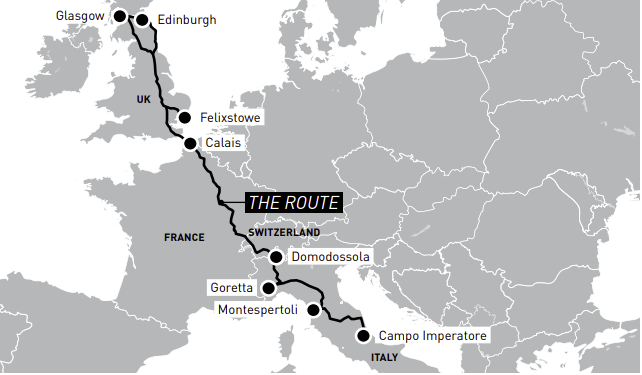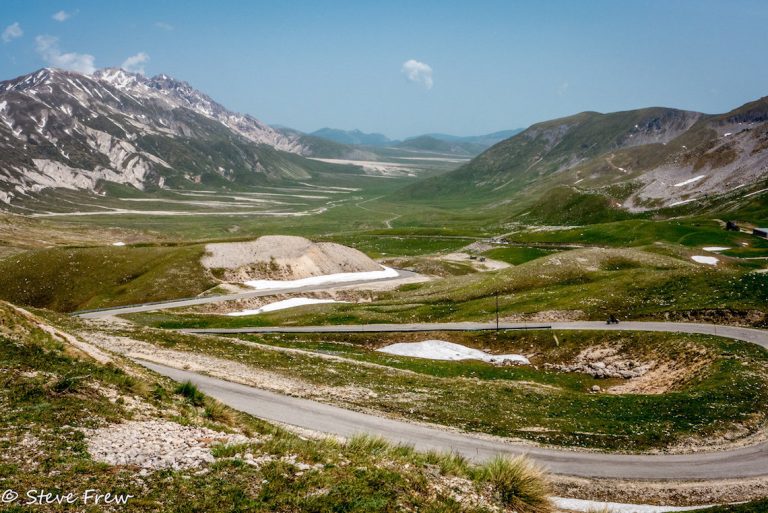Steve Frew and his wife Sue unravel the mystery of Campo Imperatore known as Italy’s Little Tibet.
It’s funny how motorcycle trips come together. Back home in Australia, we set about planning our ride through Europe peppered with ideas from television shows, friends, and just about anything that looked like it might be worth seeing, most of it preferably off the main tourist routes.
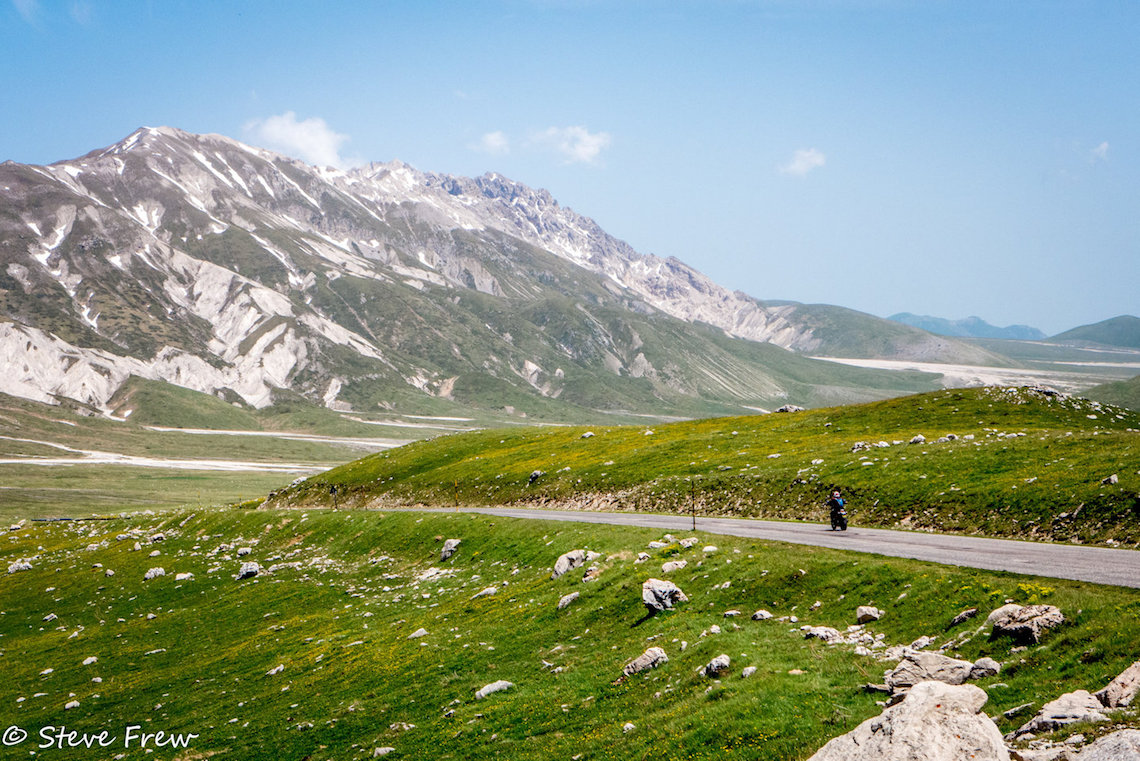
Somehow the words Campo Imperatore found their way onto the list. At this stage, we still didn’t know exactly what Campo Imperatore was. We don’t even know how it found its way onto our list in the first place. When we were told, and by whom is still a mystery, but we’re grateful as it was a highlight of our journey.
But I’m getting ahead of myself, so let me take you back to the beginning. This was to be Sue and I’s third ride through Europe on our own bikes, a Ducati Multistrada and a Ducati Scrambler. By now the shipping process had become routine.
Our Kiwi mate Dave Milligan, through his business, Get Routed, shipped our bikes with dozens of others from Melbourne to the Port of Felixstowe on the east coast of England. He’d done the hard yards and taught us the ropes when we first visited Europe a few years ago.
For this trip, we’d planned to take things slowly and spend plenty of time enjoying local life. After picking up our bikes, we would spend a month in the UK chasing friends and family, with Oundle in Northamptonshire being the first overnight stop.
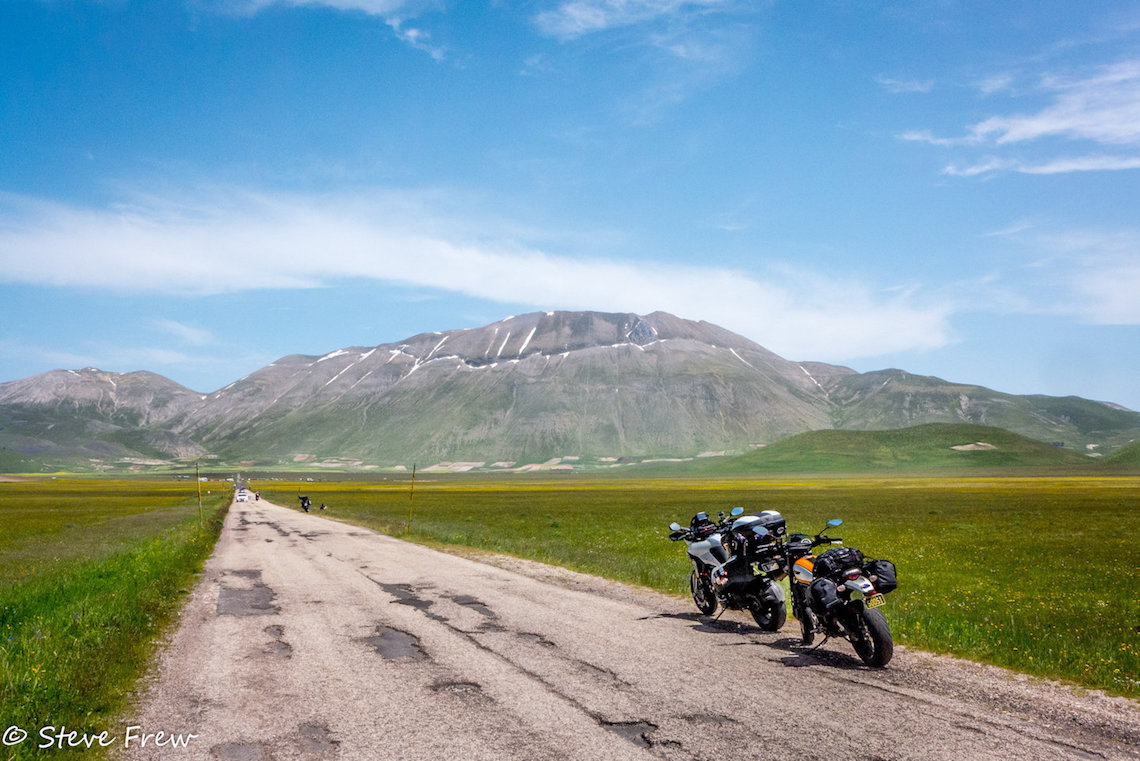
On our first night, we stayed at the Ship Inn, a cosy pub we took a shine to near the end of our last bike European bike trip. We met up with an old schoolmate of mine and fellow Ducati rider, Mark, who now lives in the UK, and spent the day riding together followed by a night in the Ship Inn’s bar.
Our journey then took us north to the picturesque spa town of Buxton, nestled at the edge of the Peak District National Park, before we rode up to Scotland, visiting Glasgow and then Edinburgh to see my son.
Our whistle-stop tour of the UK then took us south again, visiting the seaside town of Whitby and exploring Liverpool simply because we’d never been there before. We also made sure we rode the famous Hardknott Pass in Cumbria’s Lake District, a steep and twisting road we’d so often read about in Adventure Bike Rider magazine.
All too soon a month had flown by which meant it was time to load our bikes and ourselves onto the Channel Tunnel from England to France.
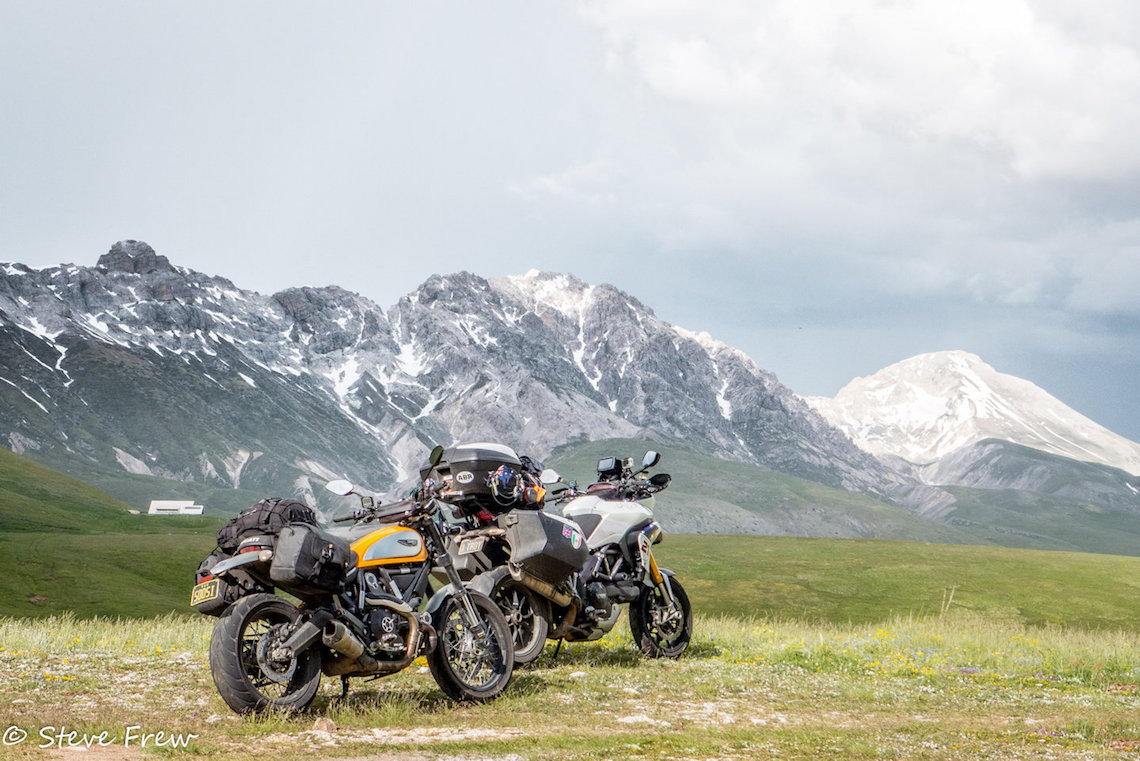
Leaving the UK behind, our thoughts turned to what lay instore in the weeks ahead. Our plans were loose but we knew we wanted to explore the Alps, ride down to southern Italy, spend some time in Portugal and get stuck into the Pyrenees.
We planned to cap off it all off with a week or so in northern Spain exploring the Picos de Europa before heading back to England. In the midst of our plans nestled the words Campo Imperatore.
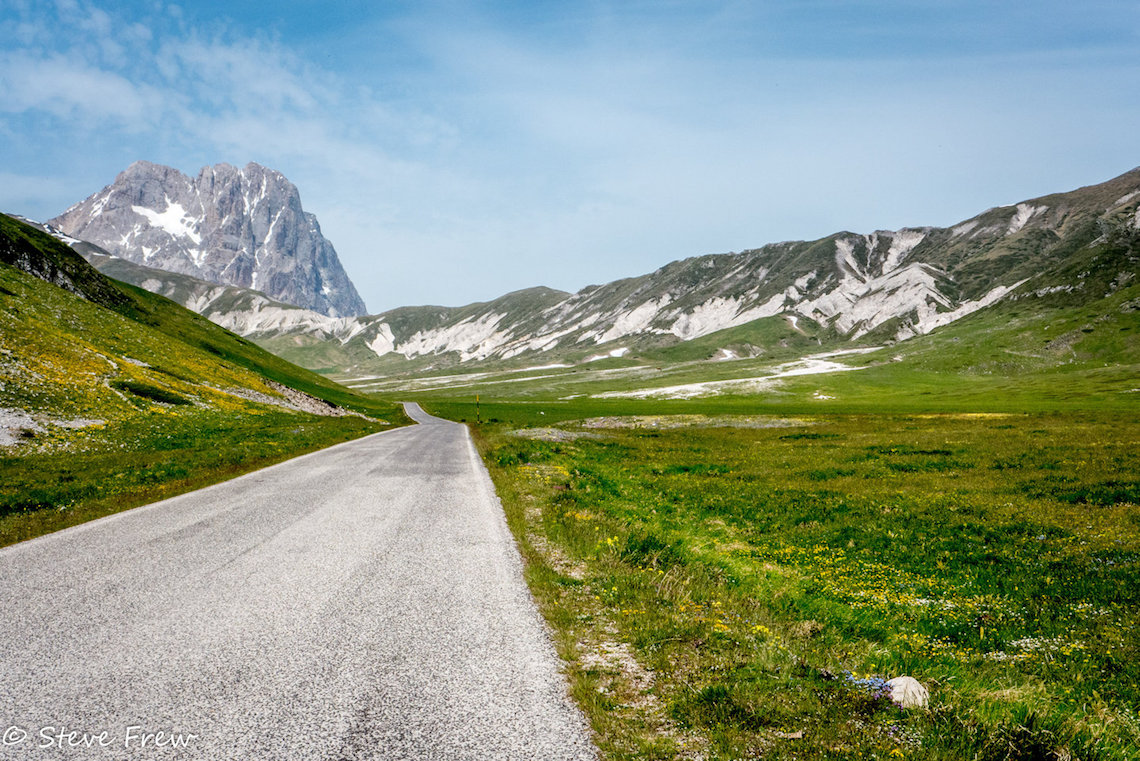
Our approach to travelling was pretty simple. We planned to keep mostly to sealed roads, picking our way through Europe using a GPS and a myriad of little out-of-the-way waypoints. For us, this approach to travelling is an adventure and we’re happy if we never see a highway.
If the road turns ugly, we continue undeterred within the confines of our ability and that of our bikes. We keep well away from cities and even large towns if we can. We love the little villages and the people we meet – real people. If you’re an ABR reader, you probably already understand why we take this approach.
Within a week of leaving the UK, we’d reached Italy. Our initial plan to spend a fortnight exploring the mountain passes of the Alps was thwarted due to a drawn-out cold snap with snow forcing the closure of many of the passes. So, we decided to do our lap of Italy first and finish up at the northern regions of the Dolomites and Alps some six weeks later.
For us, Italy started in the northern city of Domodossola, located close to the Swiss border. We then travelled south, experiencing stunning riding on lost little bitumen roads before stopping at the small town of Gorreto. According to a sign we spotted, it claims to have a population of 95 residents and 11 million trout, no doubt located in the River Trebbia that passes through the town.
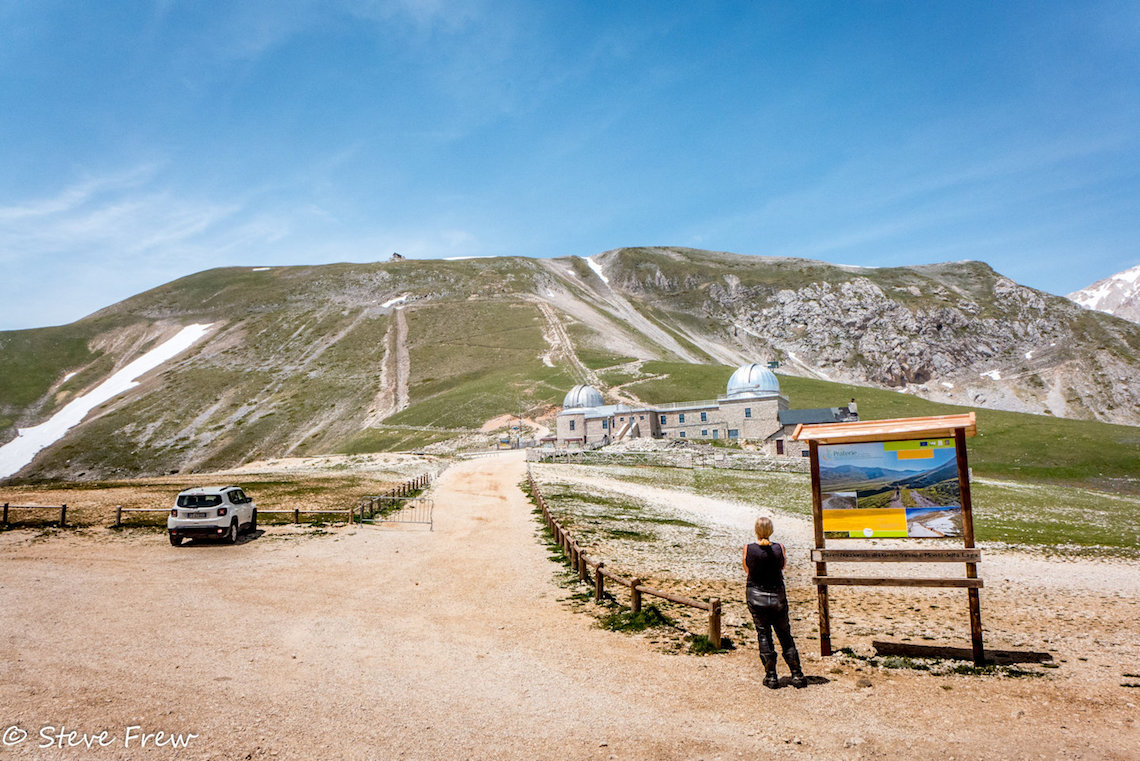
We stayed at the Hotel Miramonti and got talking to the owner Paulo thanks to the worldwide bond of motorcycling. He told us he’d been riding for many years and had a KTM 1290 Adventure parked up in the hotel’s garage.
Our journey took us further south, stopping overnight at a flash boutique hotel in Montespertoli near Florence. is didn’t provide the local flavour we usually look for when choosing an accommodation but it was the only thing on offer.
Soon enough, our meandering path led us to the Sibillini Mountains National Park, part of the Apennines mountain range that stretches down the spine of Italy. The Sibillini mountains are breathtaking no matter how you travel. In fact, the whole Apennines mountain range offered sublime riding and scenery.
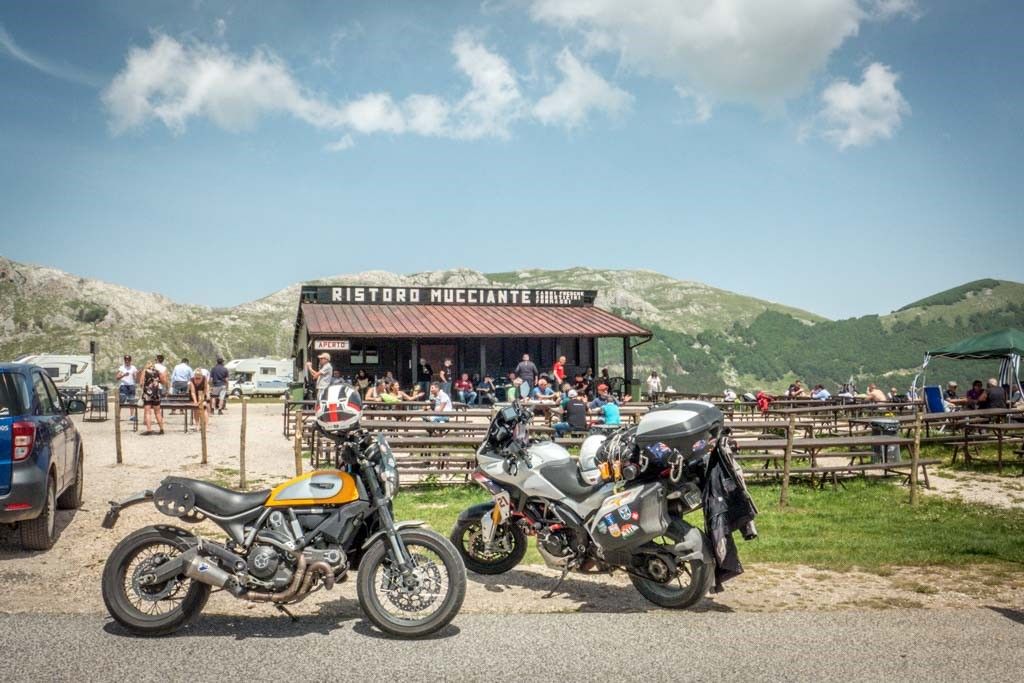
Nestled in the middle of the Sibillini’s is an old-world gem of a hilltop called Castelluccio. Unfortunately, Castelluccio and the wider region it is located in was devastated by an earthquake in October 2016. We both recalled the news story we’d seen at home in Australia at the time.
Many buildings were fully or partially destroyed and almost all of the inhabitants were evacuated by helicopter. It was one of a few earthquake devastated areas we found ourselves in on this ride.
We didn’t ride into Castelluccio but the devastation caused by the earthquake was clear to see from the plain we were stood upon. Despite this, the area was busy with tourists which was a sign that the local authority’s attempts to rebuild the region’s tourism industry must be having some success. In fact, there were cyclists, caravans and campers everywhere.
We got back on the bikes and continued riding south. We were heading for the hilltop fortress town of Castel del Monte which would be our base for two nights during our time exploring Campo Imperatore. Those words had attained almost mythical status in our minds by now.
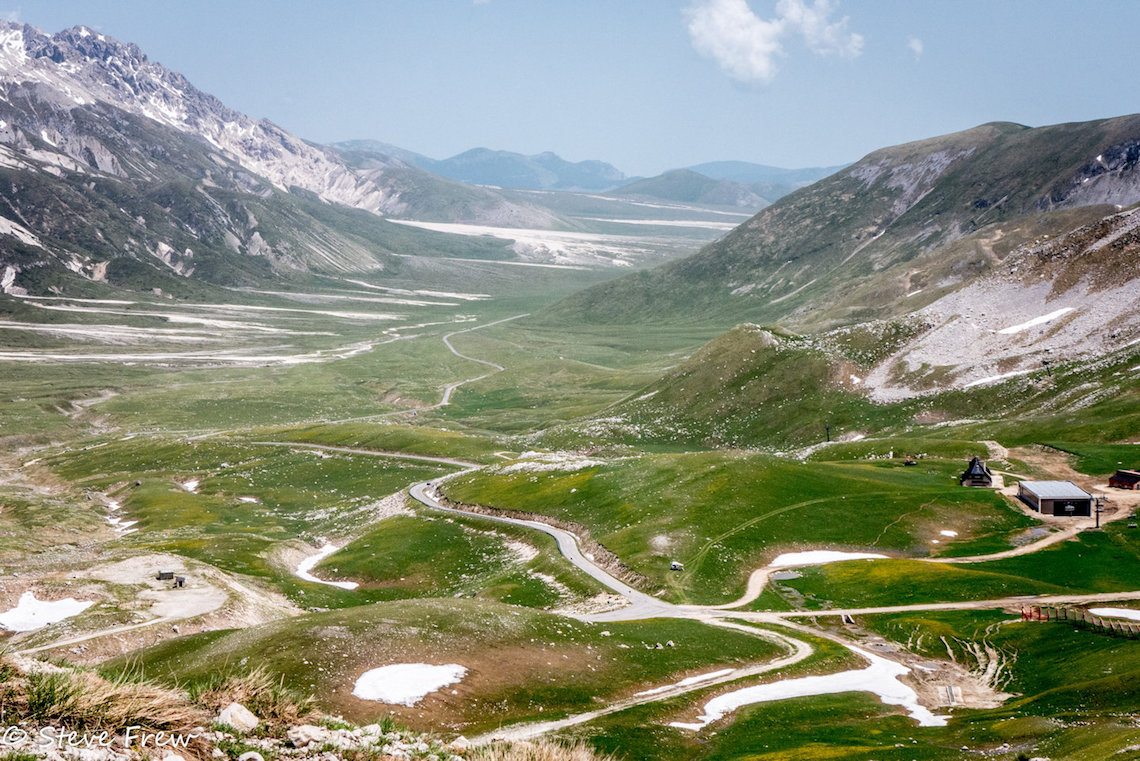
We had been riding towards it for so long but we still had no knowledge of what Campo Imperatore actually was. Over the coming miles we had plenty of those wow moments bikers have when exploring spectacular new places. A photo stop was followed by another, and yet another as we rode through the Gran Sasso and Monti della Laga National Park. We saw landscapes the likes of which we didn’t know existed in the world.
We finally arrived at Castel del Monte with our minds packed full of images of the stunning scenery we’d travelled through that day. It’s an ancient village that sees plenty of motorcycle travellers and it too has its attractions. The village looked like it might have been nearly deserted as one stage, but we saw scaffolding and workers everywhere as if the place is being reborn. Medieval villages are an attraction to us Aussies. With just a little more than 200 years of western occupation, our architecture is all pretty new, despite the perception of locals.
We spent the next day poking around and marvelling at the beauty of the region, still wanting to discover exactly what Campo Imperatore was. We followed signs and found a more deserted area surrounded by overwhelming scenery and mountains. We had found it and it was magnificent! It turned out Campo Imperatore is the Abruzzo region of Italy’s highest and largest mountain plateau, located in the heart of the Grand Sasso National Park. It stretches for around 30 square miles and sits at about 1,706m above sea level.
This vast alpine meadow surrounded by mountain peaks is a truly special sight to behold. It is known by the nickname Little Tibet because of its resemblance to the vast Tibetan mountain plateau. The area is home to an abundance of wildlife including the Apennine Wolf and the Apennine Wildcat, as well as wild boar and foxes. Locals told us the area should be awash with flowers in spring, but this year Mother Nature was a little confused as she tried to figure out what to do with the sudden jump from winter to summer. But this didn’t matter to us one bit.
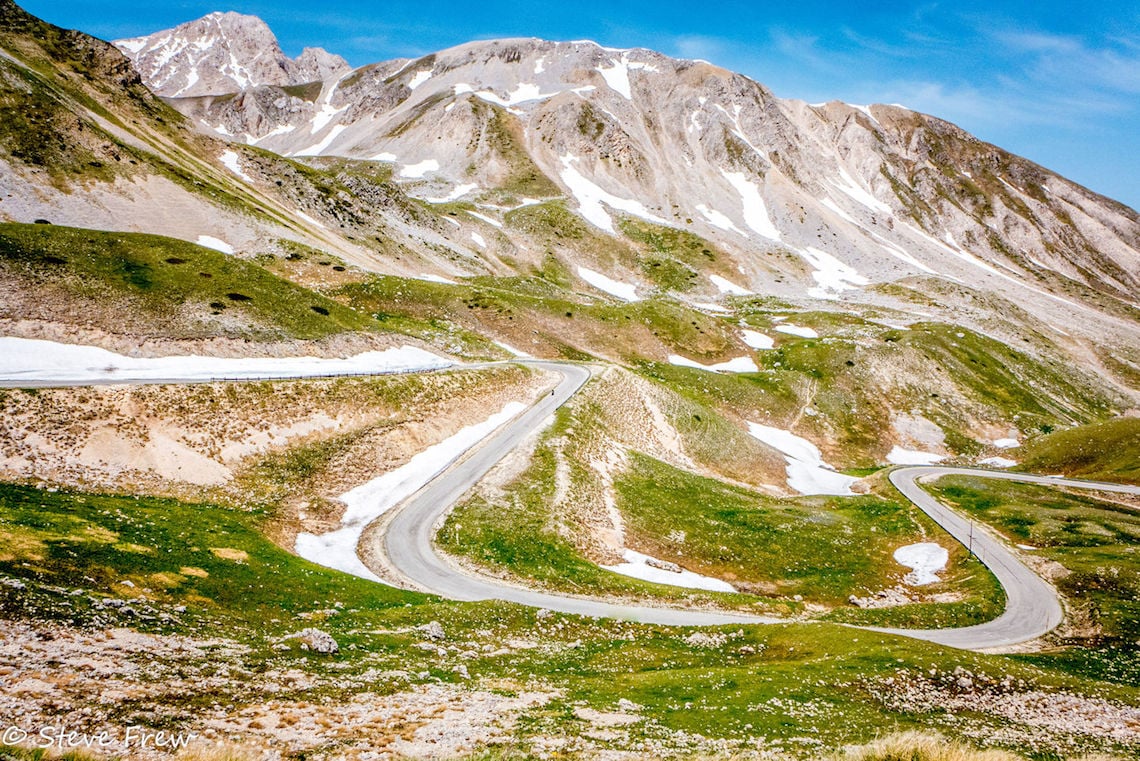
The roads in the area were also spectacular, twisting their way through the mountains. This explained why we saw hundreds of motorcycles during our time there. We arrived on a very busy Sunday, but Monday was more relaxed and very much what we were there for. I’d advise a midweek visit.
We rode to Campo Imperatore peak, at about 2,100 metres, and stopped for a coffee. At that level, we were surrounded by the remnants of the last snow season, but still, it was warm.
An impressive mountain peak sits in front of you there at the refuge and 30 years earlier, I’m sure Sue and I would have been straight to the top, but we are in our 60s now and of course, in leathers and boots it wasn’t for us. Still, the voyeuristic part of me was happy.
After soaking up the magnificent view, we rode back down onto the plains and visited the renowned Ristoro Mucciante, famous for its Arrosticini. We’d been told we had to try it by a friend in Bologna but we had no idea what to expect. I assumed it might be something like Arancini (Italian rice balls). I couldn’t have been more wrong. Arrosticini is a typical dish of Abruzzo. They are made from castrated sheep’s meat, or lamb, cut into chunks and pierced by a skewer.
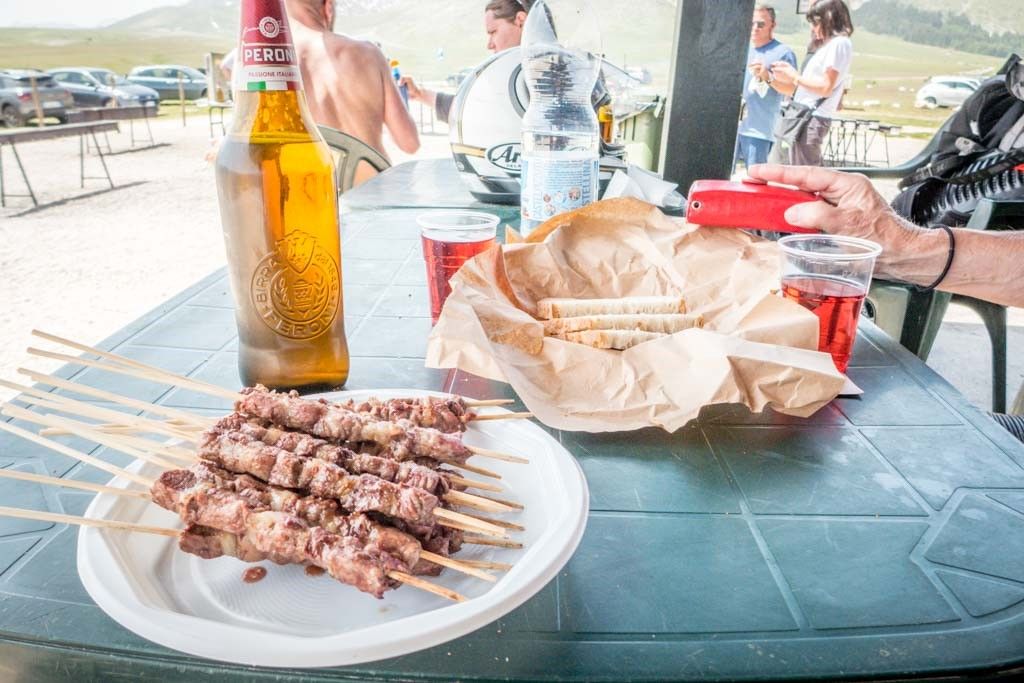
It is cooked on a brazier with an elongated shape called a canala, which resembles a gutter. It was a sensation and might have been the best-barbequed meat I have ever had. Ristoro Mucciante is located on the side of the road in the middle of nowhere. You buy your meat and drinks at the counter and go outside and place it on the brazier, sit drinking your beer or wine and contemplate the delights that await your taste buds.
It’s one of life’s cruelties that you can ride to a place this good but then need to ride back to your hotel or campground, precluding the ability to have a few drinks. There is a good camping area right there which might hold 100 vans I’d reckon and I’m sure you could drop a tent there if you were so inclined. You could then settle in and work your carnivorous genes into overtime.
We rode back to our hotel in Castel del Monte and discovered there was only one restaurant open to eat on a Monday night. The place felt like a ghost town compared to the lively bars and Pizzerias of Sunday evening. Luckily, after our barbecue experience, we weren’t looking for much.
The following day it was time to continue our journey again, this time riding to the east coast. The gem that is Campo Imperatore had set a high benchmark for the rest of the trip. Bello Campo Imperatore!
The bike
The Multi has been just perfect for touring and I often refer to it as the mule due to its ability to carry everything. Sue’s 900 S in the early days was her love affair and it made two trips to Europe. But then, the Ducati Scrambler caught Sue’s attention in 2015 after she returned from Europe. It has proven to be the right bike for her and she can carry a bit more of her own luggage nowadays.
Want to ride Campo Imperatore?
The whole of the Apennine area is well serviced with great roads. Like most of Italy, it is under-serviced by over-zealous police, although fast travel robs one of the stunning scenery in the region. There are tracks and unsealed roads leading off everywhere, and in hindsight, we should possibly have explored more. The Campo Imperatore region can get crowded, mostly in July and August. We rode through in June and the traffic wasn’t bad. Teramo is located 50 miles to the north and it’s about 20 miles to L’Aquila to the south west. Both of the cities also offer plenty of accommodation. We keep away from cities and big towns and found Castel del Monte, a town of about 400 residents located only 15 miles away. Despite its small size, Castel del Monte offers three hotels and a few scattered offerings on Air BnB. Like most of Italy, it’s all pretty reasonably priced.
